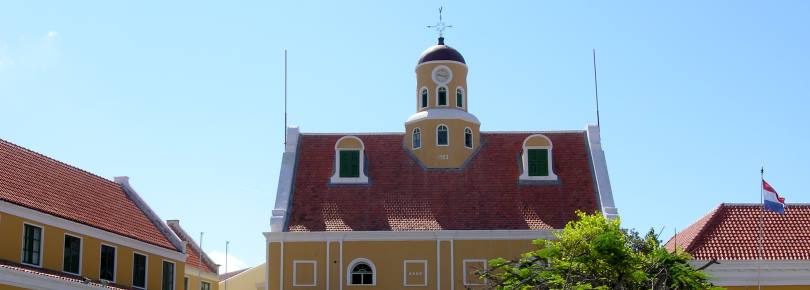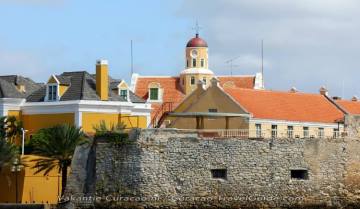The foundation "The Curaçao Museum" was established on February 23rd in 1946 by dr. Christiaan J.H. Engels and his father-in-law Rudolph Boskaljon. The museum’s goal was to show the
visitors a view of the past and at the same time exhibit contemporary local and international art. It was the first and for a long time the only museum on the island. Eventually many of the
museumgoals were taken over by other museums on Curaçao and the other islands of the former Dutch Antilles. Nowadays the museum focuses on the Western influences on the Curacaoan culture,
especially in the visual arts, which confirms her pluriform and multicultural background. The museum is housed in a former military hospital for yellow fever patients, built in 1853 by the Dutch Military.
The collection on display exists of paintings, etches, drawings, statues, furniture, glass and textile, made by national as well as international artists. In the museum two period rooms, a living room and a bedroom,
are furnished with mainly 19th century mahogany wooden furniture. There is also a traditional Curacaon kitchen. In the West-Indie Zaal you can see the map of the Caribbean made of "stained glass" by W. Bogtman.
It was made especially for the World Exhibition in New York in 1939. Also big in this room is the "Labour Panel" of Charles Eyck.
The rich collection paintings exist of work of national and international artist, including Hipolito Ocalia, Enrique Olario, Luigi Pinedo, José Maria Capricorne, Jean Girigorie, Jan Sluijters, Charley Toorop, Isaac Israëls, Edgar Fernhout, Corneille, Han van Meegeren and Carel Willink.
On the backside of the museum you can find the carillon "De Vier Konigskinderen" (The Four Princesses), named after the four daughters of Queen Juliana of the Netherlands, mother of Beatrix, the queen of the Netherlands till April 2013.
The big museumgarden contains serveral statues made by local artist and a music pavilion or kiosk. In the back of the garden you can find the children’s village, consisting of a ‘Kas di Tabla’ that shows how a toko looked like in the past, a little kunuku house called ‘Kas Palu di Maishi’, an authentic indians hut and the spider ‘Kompa Nanzi’. The Snip Gallery exhibits the cockpit the first KLM plane that crossed the Atlantic Ocean in 1934 from the Netherlands to Curaçao.












